There’s a common saying in healthcare—if it isn’t documented, it didn’t happen. But what if it’s documented incorrectly or lost in the shuffle? This is where effective revenue cycle management (RCM) comes into play.
Medical billing is the backbone of financial health, crucial for maximizing revenue and ensuring operations run smoothly. Here, we’ll explore the key stages of the revenue cycle, provide actionable tips for optimizing healthcare RCM.
The Stages of the Revenue Cycle

Pre-registration
The revenue cycle begins long before a patient enters the examination room. Before the appointment, pre-registration involves collecting essential information, such as patient demographics and insurance coverage. Accurate pre-registration can prevent delays and denials later on in the process.
Registration
Building on initial data, registration verifies and updates patient information at check-in. This stage ensures that everything is current, enabling seamless transitions into the next steps of the cycle. Failure to capture accurate data here can result in billing errors and delayed payments.
Charge Capture
This step records the services provided to the patient. From routine check-ups to complex procedures, charge capture is vital for translating medical services into billable charges. At this stage, Proper documentation and coding ensure no services are overlooked, maximizing potential revenue.
Coding
Accurate coding is critical for compliance and reimbursement. Medical coders translate clinical services into standardized codes that insurance companies understand. Errors in coding can lead to claim denials or underpayments, impacting the facility’s financial health.
Claims Submission
Once coded, claims are prepared and submitted to insurance companies for reimbursement. Timely and accurate submission is crucial for maintaining cash flow. Errors or delays in this stage can result in significant revenue losses.
Adjudication
The insurance company reviews the submitted claims during adjudication and determines the payment amount. This stage can involve negotiations and additional documentation to resolve disputes and ensure full reimbursement.
Collections
After adjudication, any outstanding balances are billed to patients. Effective collection strategies are essential for recovering owed amounts and reducing bad debt. Clear communication and patient-friendly billing practices can improve collections and patient satisfaction.
Optimizing RCM for Maximum Revenue

Focus on Front-End Processes
A strong foundation in pre-registration and registration can set the tone for the entire revenue cycle. Ensuring accuracy at these early stages reduces the risk of errors downstream. Training staff to verify insurance details and update patient information can greatly enhance efficiency.
Strengthening the Core Coding and Claim Submission
Investing in skilled medical coders and robust coding software can significantly reduce errors. Regular training and audits can help maintain high standards. Additionally, timely claim submissions are essential for a steady cash flow. Implementing automation tools can streamline this process.
Boosting Collections
An effective collections strategy goes beyond sending invoices. Offering multiple payment options, setting up payment plans, and employing compassionate collection practices can improve recovery rates. Clear communication with patients about their financial responsibilities is crucial.
Utilizing Data and Analytics
Data analytics can provide insights into the effectiveness of your RCM processes. By tracking key performance indicators (KPIs) such as claim denial rates and collection times, healthcare providers can identify areas for improvement. Regularly reviewing these metrics helps in making informed decisions.
Investing in Technology
Modern RCM systems leverage technology to automate and optimize various revenue cycle stages. From electronic health records (EHR) to automated billing systems, investing in the right technology can drastically improve efficiency and accuracy. These tools can also provide real-time data, allowing for proactive management.
Maintaining Compliance
Healthcare regulations are constantly evolving, making compliance a moving target. Regular training and updates on regulatory changes are essential. Partnering with compliance experts or using specialized software can help keep your practice in line with current laws, avoiding costly penalties.
Trust Our Experts
Effective revenue cycle management is crucial for any healthcare provider’s financial health. Providers can maximize revenue and maintain financial stability by focusing on claim submissions, boosting collections, utilizing data and analytics, investing in technology, and maintaining compliance.
Ready to take your medical billing to the next level? Contact NFV Healthcare Group to learn more about how our services can help optimize your revenue cycle management.

